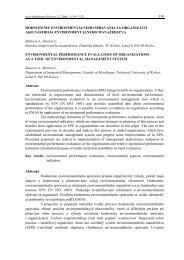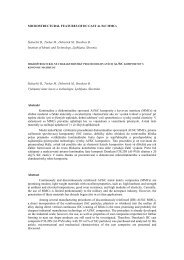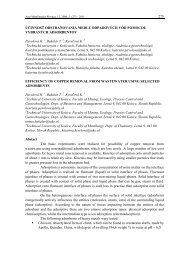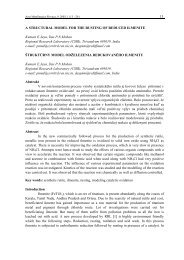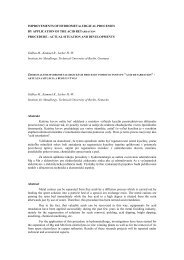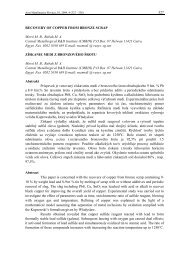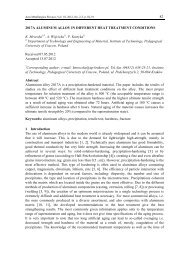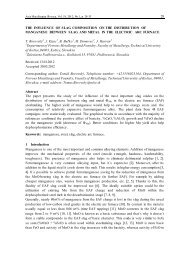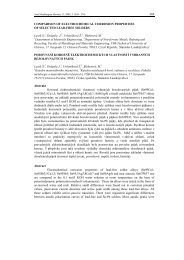4 EFFECT OF SEVERE PLASTIC DEFORMATION ON THE ...
4 EFFECT OF SEVERE PLASTIC DEFORMATION ON THE ...
4 EFFECT OF SEVERE PLASTIC DEFORMATION ON THE ...
Create successful ePaper yourself
Turn your PDF publications into a flip-book with our unique Google optimized e-Paper software.
Acta Metallurgica Slovaca, Vol. 16, 2010, No. 1, p. 4-11 7a rather small temperature interval. During further heating, when the solidus temperature for thecomposition is exceeded, also persistent liquid phase is formed, resulting in fast shrinkage.Depending on the selected heating rate and sintering temperature, the ratio solid-liquid variesand also the shrinkage does. The very sensitive solid-liquid equilibrium results in tightrequirements for the tolerable temperature interval. It is well-known that for an effective liquidphase sintering, a wetting liquid represents an essential requirement. Authors [20-22] suggestedthat the Al-CuAl 2 eutectic can wet Al 2 O 3 at 600 °C. However, not even Mg additions to melt Alreduce the contact angle sufficiently to produce wetting. This is possibly the main reason whysintering Al-Zn-Mg-Cu aluminium alloys still can be considered not that easy.It should be noticed, that investigated microstructures present the regions with alloying elementswith high chemical activity, e.g. Cu and Mg, Figs. 1 and 2.Fig.1 The typical microstructure for 400 MPa pressed specimens, a) SEI and b) COMP<strong>OF</strong>ig.2 The typical microstructure for 600 MPa pressed specimens, a) SEI and b) COMPOMainly, Mg from the masteralloy particles is concentrated around the pores and in the necksvolume. It appears that the primary porosity inside powder is also relatively permeable. Thedensification behaviour of powder particles in the examined alloy is complicated due to the largesurface area and associated oxide layers. Therefore, the first pass of ECAP-BP only causedpowder particles to slide against each other with little appreciable deformation of them; this isalso confirmed in [23].3.2 Consolidation processesConsolidations of studied powder using FEM are illustrated in Fig. 3 and Fig. 4.



